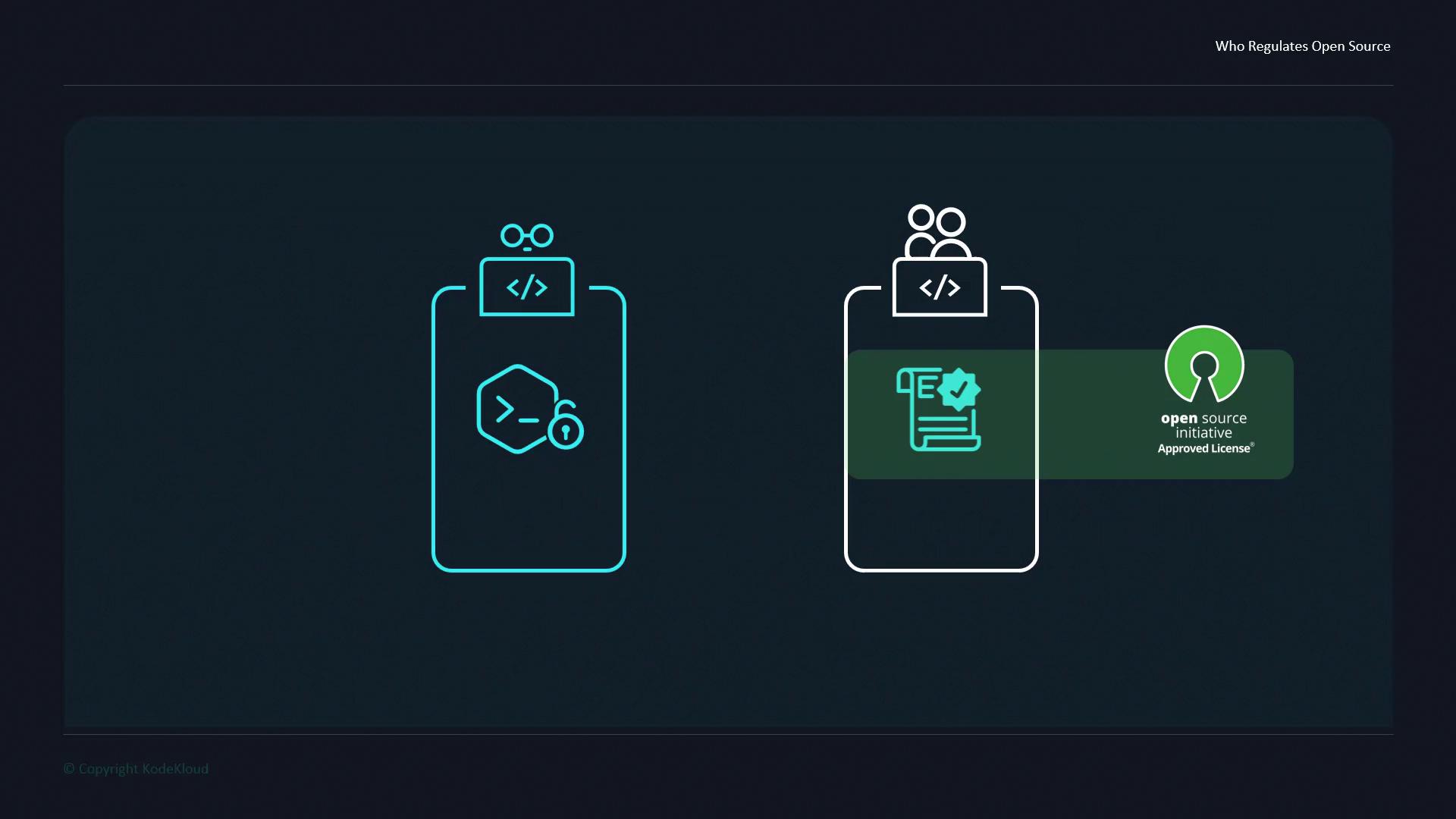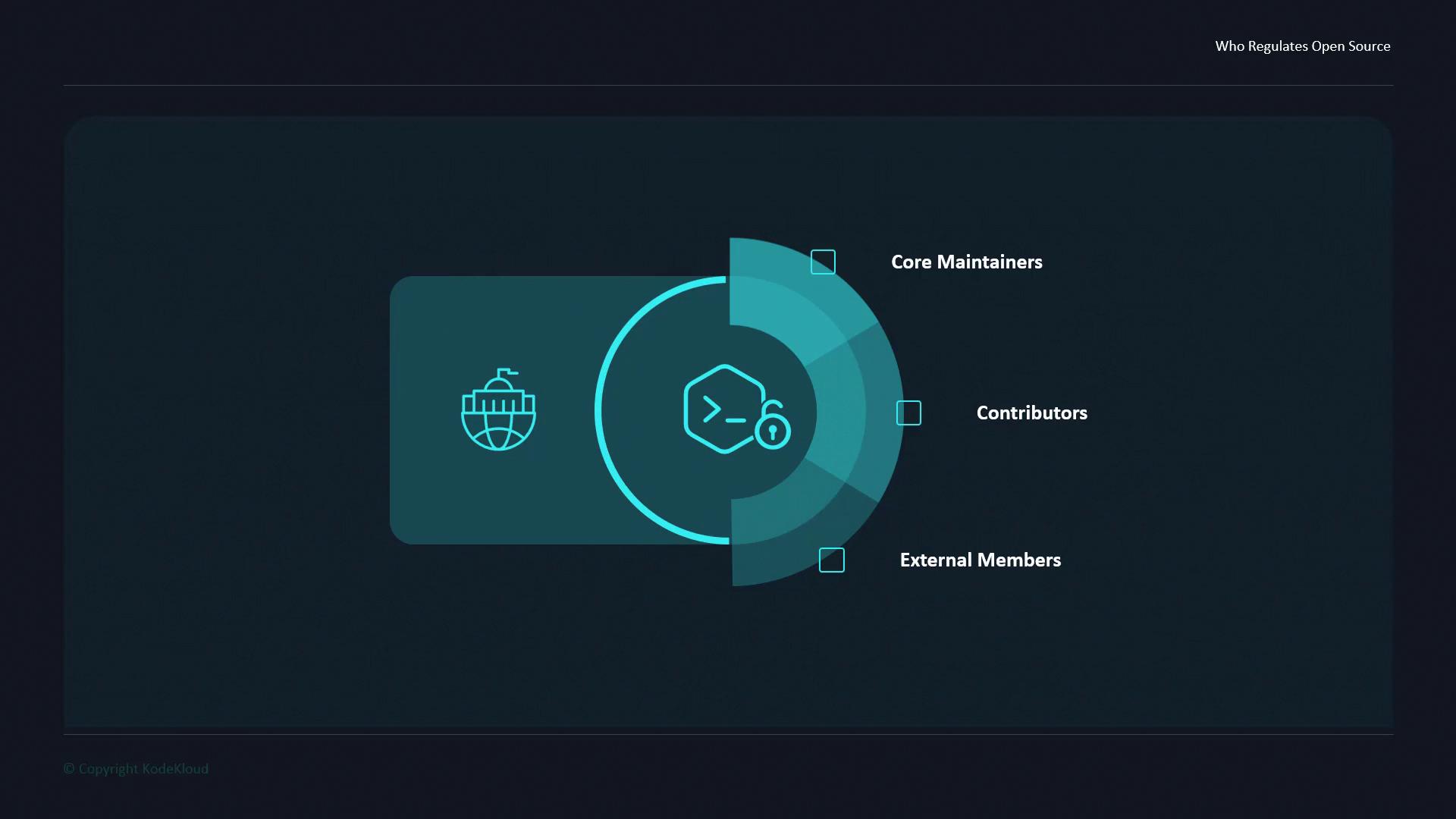Open Source for Beginners
Open Source
Who regulates Open source
Open source is a collaborative methodology driven by communities and individual contributors. Unlike proprietary software, no single authority governs all open source projects. Instead, various non-profit organizations and standards bodies help ensure licensing compliance, legal clarity, and best practices.
Community-Driven Governance
At its core, open source relies on developers, organizations, and users working together to build and maintain software. As projects grow, they often establish governance models—such as benevolent dictator, meritocratic, or democratic processes—to streamline decision-making and manage contributions.
Licensing and Legal Oversight
While the original creator retains copyright, contributors can modify and redistribute code under an open source license. To maintain consistency and legal soundness, many licenses are reviewed and approved by organizations like the Open Source Initiative (OSI) and cataloged in the SPDX License List.

Core Roles in Open Source Projects
As communities form around a project, three primary roles typically emerge:
| Role | Responsibilities |
|---|---|
| Core Maintainers | Oversee releases, review and merge pull requests, and set the project roadmap. |
| Contributors | Submit code, documentation, tests, and other improvements. |
| External Members | Use the software, report issues, request features, and provide feedback. |

Note
Each open source project may adopt its own governance model—tailored to its community size, goals, and culture—to guide decision-making and conflict resolution.
Links and References
Watch Video
Watch video content